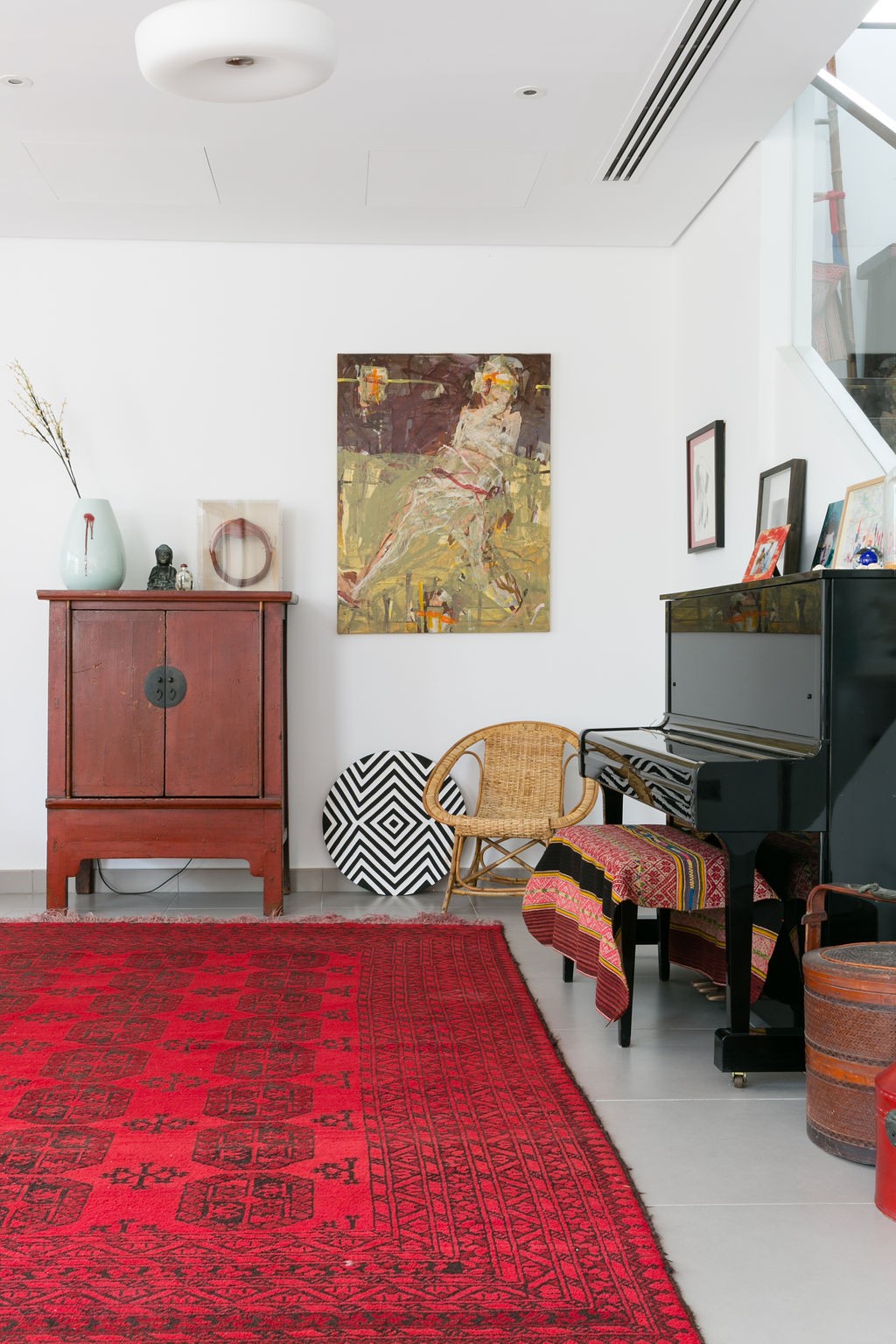Nisrine El Lababidi Moghraby, Design Alchemist at Harf Noon Design Studio gives her top tips and advice on purchasing a vintage rug

Whether you’re starting your interior design plan or looking for personalized ways to upgrade your home, vintage pieces are guaranteed to add a one-of-a-kind sparkle to any room. Vintage in particular are rich in character, charm, colour and pattern and are can be celebrated as a statement piece that can bring life to any space. Vintage rugs can become an element in your home that’s unique and tells a story – one that was made with care and designed with a purpose.

Every home could benefit from a beautiful antique rug, but shopping for one can feel a little daunting. How do you know what to look for and which ones are well-made? How do you pursue buying vintage and make sure it lasts a lifetime? Enough for it to perhaps become an heirloom one day! Allow me to guide you through.
One of the factors to consider when choosing a vintage rug for your space is to first decide on the size of the area you are trying to cover. Vintage rugs are usually handmade, and unlike today, they were made in non-conforming rug sizes. So measure up your area very carefully! The rug should act as a frame for your furniture pieces – I like to have them sitting on the carpet about 15cm in or 15cm out – placing masking tape on the floor will help you better visualise the area.

The next step is to do a bit of research on the style that you are attracted to and what works for your interior – it could be tribal, traditional or geometric. Doing some research on Pinterest is great for this and simply narrowing down the colours, tones and size is a solid starting step. Next, you need to decide on the type of rug you are looking for. You may opt for a Turkish Anatolian, Avanos, Herki, or Oushak rug – each or come from different regions and periods and have colour different colour variations. All are hand-dyed and filled with symbols signifying eternity, family, love and even harvest seasons! Persian rugs are much more intricate in finish compared to their Turkish counterparts. Take for example the narrow Ardabil rugs and Hamedan (which are great for corridors and tighter spaces), as well as the rare Heriz rugs with their centre motif and geometric designs. If you are looking for something more floral, the Malayer rug might be for you with its flowers, birds and sprouting seed designs. You might also opt for the simpler Shiraz designs, depicting nightingales shown as angular birds and symbolising contentment and happiness.

Once you have decided what style and size you are opting for – set the budget that you are willing to invest in your rug. Then only are you ready to begin your search for that perfect piece. One thing I recommend is to keep an open mind, remember the reference you may have found is unique so you might find something similar in a different size and you may want to layer it on top of a sisal rug for example to fill the space.
Once you have found the rug, whether online, at a shop, or even while travelling to regions in Turkey or Iran, you will want to speak to the seller and understand the history of where the rug came from. Remember these vintage carpets come with their own history, they are passed down throughout the years, so it is interesting to discover who owned them in the past and find out their lifestyle and what the rug may have been through. Inspect it very well and check how much wear it has – although they are many years old, due to their durable fabric and the care that was put into their creation, more often than not, vintage rugs are in very good condition and will last many more years to come. If you are purchasing online, ask for images of the rug from all angles, including close-up shots. Ask about any imperfections, curved edges etc.

Once the rug has become your prized possession, make sure you care for it properly. Try to keep it away from direct sun exposure as that can fade the natural die with time. Also flip it every few months, so that the areas wear equally all around. When cleaning it, try a low suction hoover or a normal brush. Wool is a natural material and it can break down with extreme suction. Have it professionally cleaned when needed, usually around every five years, and don’t attempt this yourself! Final tip, never put a plant pot on top of it, or you will end up creating a circle of mildew over the years which will ruin your rug.
Shop vintage rugs in the UAE from Tamam vintage: www.tamamvintage.com
See more at www.harfnoondesignstudio.com















